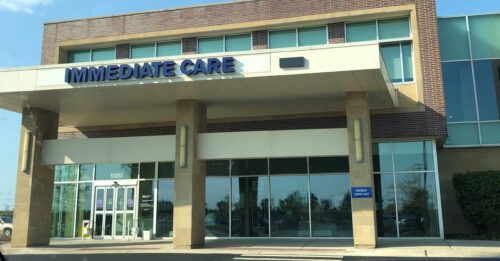Renovation Gold: Data crunch
View the full story, including all images and figures, in our monthly digital edition
In the heart of Silicon Valley is a high-demand data center owned by Equinix. Equinix needed to rapidly expand and convert its existing data center (SV2 facility) in Santa Clara, Calif., to meet the growing number of customers who rent computer room space.
That meant the two-story, 160,000-sq-ft data center building needed a $50 million renovation. Less than a third of the 80,000-sq-ft second floor was already occupied by rentable space. The remaining 44,000 sq ft, which had been left as a gigantic empty room, needed to be converted into useable computer space as quickly as possible. The 80,000-sq-ft first floor included office space and a support equipment room. The half of that floor that contained electric and mechanical rooms needed renovation, too.
That’s when San Jose-based Alfa Tech Cambridge Group (ATCG) stepped in. Equinix’s target design time was 16 weeks. Instead, ATCG completed the design in less than 12 weeks by collaborating face-to-face with Equinix’s technical staff.
Going green, saving big
“Data centers are known for being energy hogs,” said Tim Chadwick, who served as ATCG’s project manager and has been with the company since 1994. “But we wanted to make it as energy-efficient as possible.”
To achieve its goal, ATCG considered using reclaimed water. The South Bay Water District was trying to find ways to use the water; if the non-saltwater ended up in the Bay, it would alter the Bay’s delicate saltwater balance. To educate area residents, City Hall offered a class on recycled water. ATCG jumped on the idea, but then had to convince the city that it was in the city’s best interest to dig up streets to add a branch line to ATCG’s location in Santa Clara.
“We went on Google Earth and showed the city that the whole area around the job site was marked with data centers,” Chadwick said. “We convinced the city they could get a lot of users if they just built the line.”
Part of that approval resulted from ATCG’s reminder that data centers draw water and power 24 hours a day, seven days a week, unlike a typical office building that experiences high demand only from 8 a.m. to 6 p.m. during the work week.
After it received the South Bay Water District’s approval, ATCG had to convince an engineer in the Environmental Service Dept. that a reclaimed water line to the area was a good idea as well. Following that hurdle came a special meeting with the state health department.
“They were worried about cross connections and how the drinking water could be affected by the reclaimed water,” said Chadwick.
So ATCG submitted, on four different occasions, sets of drawings and site plans that showed how it would protect the water supplied—which included separating buried drinking water and reclaimed water pipes by 2 ft to make sure leaking water couldn’t come near the drinking supply. An in-house team of four to five Equinix engineers assisted ATCG in the process.
The time-consuming process lasted from July 2007 until March 2008, but the end result was worth the trouble. Equinix needed only two water storage tanks—at 20,000 gal and 10,000 gal—saving it from adding a new 30,000-gal storage tank. This saved Equinix $300,000 in construction costs alone. The project also provided secondary savings since reclaimed water costs approximately 35% less than standard domestic water.
Another cost-savings concept came to light when ATCG added rooftop air handlers with an air-side economizer. Northern California’s climate is ideal because temperature extremes are rare. Although adding an air-side economizer initially costs more, the annual savings of $318,000 per year meant in less than four years Equinix could recoup its costs and start saving money. The units also are equipped with atomizing humidifiers with RO water makeup that avoid the wasted energy associated with electric steam humidifiers and also provide the added benefit of free cooling when in use.
Because the data center required redundant air-handling systems to assure reliability in the event of a failure, ATCG was able to adjust the control sequence and added variable frequency drives (VFDs) to operate all air handlers at a reduced airflow rate. As a result, there was less of a pressure drop through each device and a net savings of 18% hp per fan, more than $51,000 a year in electrical savings.
Also for reliability reasons, redundant chilled water piping loops were installed. By using a control algorithm and VFDs, the system flow was split between each loop during normal operations, yielding an additional energy savings of $16,000 per year.
High-efficiency lighting sources were added to reduce lighting heat from fixtures in the hallways by 40%. Low-flow toilets were retrofitted in.
The existing 2,200-ton chiller plant was augmented to include 3,900 tons of capacity with the addition of two new variable-speed drive chillers. The most efficient chillers were staged to use first for optimal energy performance.
Challenges and solutions
Challenges included expanding and completing the construction without disrupting the existing 20,000 sq ft of live data center operations, and dealing with an inefficient existing infrastructure system that limited the overall building performance capabilities. (Think of the small business owners who would be furious when their Web sites went offline if the data center went down during the construction phase.)
To provide additional reliability, ATCG specified dramatic upgrades to the DDC system to provide redundant controllers for an all-new HVAC system, which provided control functionality in case a DDC ever failed.
“We consulted with several contractors who all said temporary generators were the only way to keep power going,” Chadwick said. “Instead we were able to save $100,000 by not using temporary generators.”
To do so, ATCG prepared detailed procedures for the changeover to eliminate the need for temporary generators. Stephanie Taylor, ATCG’s lead electrical engineer for the project, said four pairs of paralleled, 2 MW, 12 kV generators were backed up by a ninth 2 MW, 12 kV “swing generator” that was held in reserve and could be used in the event of a breakdown.
The end result
ATCG hopes the project will be U.S. Green Building Council LEED certified in the near future. The former energy hog is now a highly efficient data center with a peak power usage effectiveness (PUE) of 1.66, well below the typical PUE average of 1.83 for data centers. That means for every 1 W of computer power, 0.66 W of power is being consumed by HVAC, lighting, etc.
Said Chadwick, “Peak PUE assumes the worst possible weather conditions and redundant equipment failures. With the redundant equipment and air-side economizer systems operating, an annualized PUE of 1.27 will be obtained.” Despite all the energy-efficient changes, which typically cost more up front, ATCG ended up 15% below the initial project budgets by implementing sustainable and cost-effective design strategies.
“Equinix told us this is the best project they’ve done in the last 10 years,” Chadwick said with a laugh. “It was a great project because we worked well together as a team.”
Do you have experience and expertise with the topics mentioned in this content? You should consider contributing to our CFE Media editorial team and getting the recognition you and your company deserve. Click here to start this process.



